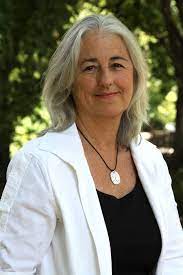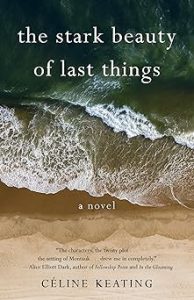Mastering Multiple Points of View In Writing
Writing with one point of view (POV) character, whether in first or third person, is the simplest choice a writer can make when venturing into fiction. After all, there is only one character to focus on and develop, and the story arc is aligned with that character. On the other hand, novels with several point of view characters can give a greater sweep and a broader perspective to the world of the novel. Some of the greatest novels of all time are told in multiple points of view, such as Jane Austin, Charles Dickens, and Leo Tolstoy, each of whom used a distant, or omniscient, voice. More contemporary writers usually write closer in, with a third person voice that can be quite close to first person.
In any case, mastering multiple points of view is difficult. You risk diffusing the plot and confusing readers. So, given how tricky this can be, when and why should you consider giving it a try?
Much depends on the kind of novel you want to write. Rather than go with your gut, consider if your intentions align with some of the following considerations when making your choice.
A multiple POV approach done well will result in a rich characterization, because readers experience the characters from both inside their perspectives and outside of it. At times we are given a character’s interiority–their thoughts and feelings–while at others we are given a view as to how they are seen by other characters in the novel. This results in a more rounded understanding of each character. If you have an unreliable, complicated, or defensive narrator, you might benefit especially from this approach. A great example of such in-depth characterization is Mrs. Dalloway by Virginia Woolf. By having Mrs. Dalloway’s interiority interlaced with others’ view of her, we get a more nuanced and multifaceted sense of her personality.
Because point of view refers to the consciousness through which we see and understand the events of a story, a multiple POV approach can offer the reader competing interpretations of events. This can be very useful if you’re writing a historical or family saga. In Atonement, by Ian McEwan, the shifting POV gives varying perspectives on the events of a single day that changes the lives of the characters forever, and the reader gains a kind of collective understanding. In Claire Lombardi’s The Most Fun We Ever Had, each character experiences the family dynamics very differently and the reader gets a more comprehensive view of the family than any of the individual characters alone is capable of achieving.
Perhaps your ambition is to depict a particular society or period of time, and to reveal different facets of a given world. Depicting varied walks of life and a chorus of voices can create a kind of kaleidoscope effect and capture a society more precisely than it can be viewed through just one character’s perspective. Tom Wolfe skewers social class and politics in 1980s’ New York City this way in Bonfire of the Vanities. Richard Powers roams centuries and gives a sweeping view of the environment in Overstory. In my most recent novel, The Stark Beauty of Last Things, my interest was in the story of the coastal area of Montauk, Long Island, an elegy of sorts, as well as of characters profoundly in love with that place. Because I wanted to suck in everything—the world of fishing, of landscape painting, land use, of nature—I included a large cast of characters so each of these POV characters contributes a different kind of knowledge to create what I hope is a larger whole. I also used an omniscient voice in the form of short seasonal interludes. I thought this was a fairly risky thing to do, but readers have mentioned those sections as among their favorites.
A last benefit of multiple points of view is for those interested in writing that deals with controversial themes and issues. Fiction with a cause can slip into a lecturing tone, and varied points of view can mitigate that danger. As different characters espouse different values or sides of an issue, the reader engages with these debates as well. In Her Sister’s Tattoo, by Ellen Meeropol, a conflict between two sisters and their warring views of appropriate activism animates the story and challenges the reader to deliberate the issues as well. In my novel each character has a slightly different relationship to the land, whether it represents beauty, spirituality, heritage, or resource to be bought and sold. Using multiple points of view allowed me to explore various themes through the thoughts and opinions of a variety of characters and to come at issues from contrasting angles.
Those are the pros to using multiple POVs, but there are also the cons. Circling back to the challenges of this approach, here are some thoughts on how to minimize them. Since you run the risk of turning off your readers if you switch among character points of view too frequently, you need to ensure initially that the reader has a firm sense of each character. What some novelists do is settle on one for a while before making the first switch, and making sure subsequent POV characters have already been introduced. Later in the book, once the reader has a firm grasp on the story and the characters, the switches can be more frequent. Second, it’s important to keep grounding the reader, especially if locations and time frames also shift. It’s good practice in include a line or two with each shift to remind the reader who the character is and where the story left her off. Last, it’s very important that there is a very solid overarching plotline to hold things together. This is why the most effective multiple point of view books have a unifying aspect of some sort, whether it be a compressed timeframe, the same event being experienced, the same family, the same town.
Yes, it can be a challenge to manage the plot, timelines, and variety of characters in a multiple POV novel, but it’s worth the effort if your aims and material align with the considerations above.
—

©AlexaBrandenberg2022
Céline Keating is an award-winning writer living in Bristol, Rhode Island. Her novel THE STARK BEAUTY OF LAST THINGS is forthcoming in October, 2023. She is the author of two novels: Layla (2011), a Huffington Post featured title, and Play for Me (2015), a finalist in the International Book Awards, the Indie Excellence Awards, and the USA Book Awards. Her short fiction and articles have been published in many literary journals and magazines. For many years a resident of Montauk, NY, Céline continues to serve on the board of environmental organization Concerned Citizens
website: www.celinekeating.com
Facebook: https://www.facebook.com/AuthorCelineKeating/
Twitter: https://twitter.com/celinekeating
Instagram: https//instagram.com/celinekeatingauthor
THE STARK BEAUTY OF LAST THINGS, Celine Keating
 The Stark Beauty of Last Things is set in Montauk, the far reaches of the famed Hamptons, an area under looming threat from a warming climate and overdevelopment. Now outsider Clancy, a thirty-six-year-old claims adjuster scarred by his orphan childhood, has inherited an unexpected legacy: the power to decide the fate of Montauk’s last parcel of undeveloped land.
The Stark Beauty of Last Things is set in Montauk, the far reaches of the famed Hamptons, an area under looming threat from a warming climate and overdevelopment. Now outsider Clancy, a thirty-six-year-old claims adjuster scarred by his orphan childhood, has inherited an unexpected legacy: the power to decide the fate of Montauk’s last parcel of undeveloped land.
Everyone in town has a stake in the outcome, among them Julienne, an environmentalist and painter fighting to save the landscape that inspires her art; Theresa, a bartender whose trailer park home is jeopardized by coastal erosion; and Molly and Billy, who are struggling to hold onto their property against pressure to sell. When a forest fire breaks out, Clancy comes under suspicion for arson, complicating his efforts to navigate competing agendas for the best uses of the land and to find the healing and home he has always longed for.
Told from multiple points of view, The Stark Beauty of Last Things explores our connection to nature—and what we stand to lose when that connection is severed.
BUY HERE
Category: Contemporary Women Writers, How To and Tips































Great article, Celine. Thanks for sharing your insights.